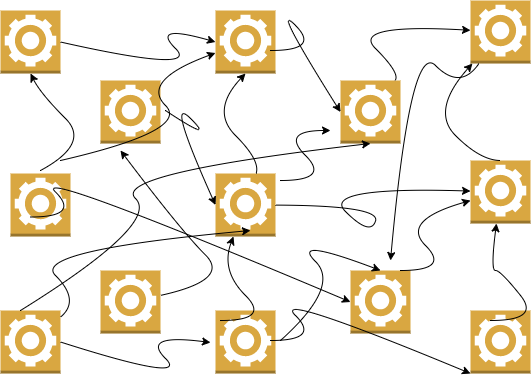Introduction
Over the last 10 years, the rapid adoption of microservices architecture has resulted in enterprises with hundreds or (sometimes even thousands) of services. With the growth of containerization technologies like Docker and Kubernetes, microservice patterns have seen the strongest growth; resulting in a complex dependency matrix between these micro-services. For teams to monitor, support, and to maintain these services is becoming a challenge so most enterprises have invested in some kind of microservices management tool.
This article will explore some of the common aspects of microservice management. Then we’ll take a closer look at the centralized gateway pattern, as well as its limitations (most enterprises have started with or currently still use this pattern). Then we will look into a new pattern called “Service Mesh” which has gained a lot of attention in the last 3–4 years. Often this pattern is also referred to as the “Side Car Proxy”. So lets get started!
Micro-Services Management
As enterprises start building more and more microservices, it’s becoming clear that some of the aspects of microservices are common across all microservices. So it makes sense to provide a common platform for managing these common aspects. Below are some of the key common aspects:
Service Registration and Discovery: A commonplace to register, document, search and discover microservices
Service Version Management: Ability to run multiple versions of a microservice.
**Authentication and Authorization: **Handle authentication and authorization including Mutual TLS (MTLS) between services.
Service Observability: Ability to monitor end to end traffic between services, response times, and quickly identify failures and bottlenecks.
**Rate Limiting: **Define threshold limits that traffic services can handle.
Circuit Breaker: Ability to configure and introduce a circuit breaker in case of failure scenarios (to avoid flooding downstream services with requests).
**Retry Logic: **Ability to configure and introduce retry logic dynamically in services.
So it’s a good idea to build these concerns as part of a common framework or service management tool. As a result, micro-service development teams don’t have to build these aspects in the service itself.
#service-mesh #istio-service-mesh #microservices #gateway-service #envoy-proxy
